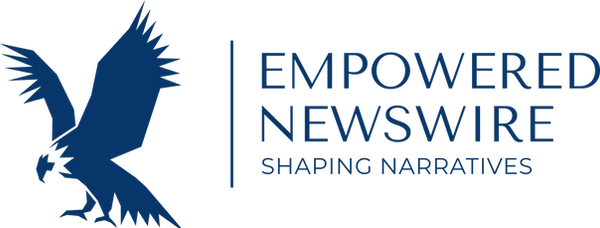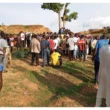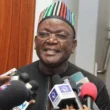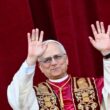On May 8, 2025, white smoke billowed above the Sistine Chapel, as Robert Francis Prevost made history by becoming the first American ever to be elected pope, taking on the name Leo XIV after receiving the support of cardinals from around the globe.
His election marks a new chapter for the Catholic Church, which serves more than 1.4 billion people worldwide. His election ushers in a new era of leadership shaped by deep pastoral commitment, international experience, and a unique understanding of both North and South American Catholic communities.
Here’s all you need to know about the first American Pope.
Early Life and Background
Born on September 14, 1955, in Chicago, Illinois, Robert Francis Prevost grew up in a devout Catholic household deeply rooted in faith and tradition. His mother, Mildred Martínez, was of Spanish descent, and his father, Louis Marius Prevost, was of French-Italian heritage.
The family’s home was often visited by local clergy, a reflection of both the family’s welcoming spirit and their strong ties to the Church. From an early age, Prevost was drawn to the priesthood, serving as an altar boy and attending Catholic schools, where he further nurtured his vocation.
He pursued higher education at Villanova University, where he earned a bachelor’s degree in mathematics in 1977.
Despite his aptitude in the sciences, his calling led him to religious life. He joined the Order of St. Augustine (OSA), taking his first vows in 1978 and solemn vows in 1981.
His theological education continued at the Catholic Theological Union in Chicago, where he obtained a Master of Divinity in 1982.
Ordained a priest on June 19, 1982, by Archbishop Jean Jadot, Prevost deepened his ecclesiastical formation in Rome.
He earned both a licentiate and a doctorate in canon law from the Pontifical University of St. Thomas Aquinas, also known as the Angelicum, completing his studies in 1984 and 1987 respectively.
Missionary Work in Peru
Shortly after completing his studies, Prevost was sent to Peru as a missionary, where he served from 1985 to 1998.
His mission took him across the diverse terrain of the country—from the jungle to coastal towns to remote Andean villages.
There, he wore many hats: parish pastor, seminary rector, canon law teacher, and director of formation for local clergy. His dedication to the people and culture of Peru led him to become a naturalized Peruvian citizen in 2015.
Those who worked with him in Peru describe him as approachable, humble, and deeply attentive to the needs of the poor.
His multicultural fluency and pastoral sensitivity earned him widespread respect. This deep connection to Peru would shape much of his future ecclesial leadership and outlook on the global Church.
Rise Within the Church
In 1999, Prevost was elected provincial of the Augustinian Province of Chicago, returning to the U.S. after more than a decade abroad. However, this period was not without controversy.
In 2000, during his time as provincial, he approved housing for a priest, Fr. James Ray, who had been credibly accused of sexual abuse, near a Catholic school. The decision, made in cooperation with the archdiocese, was later publicly criticized for failing to prioritize transparency and child safety.
Despite the controversy, Prevost’s leadership continued to advance. In 2001, he was elected Prior General of the Order of St. Augustine, a position he held for two six-year terms until 2013.
In this global role, he managed Augustinian communities across the world, strengthening both organizational unity and spiritual mission within the order.
In 2014, Pope Francis appointed Prevost as apostolic administrator of the Diocese of Chiclayo in northern Peru. A year later, he was formally installed as bishop.
As bishop of Chiclayo from 2015 to 2023, Prevost oversaw one of the most populous regions in Peru, including large urban centers and underserved rural areas.
His administration sought to balance traditional Catholic teaching with local pastoral needs, though his tenure again drew criticism related to abuse allegations.
The Survivors Network of those Abused by Priests (SNAP) alleged that he failed to act decisively in a case involving Fr. Richard McGrath. The diocese strongly denied the claims in 2024, but the incident added to ongoing scrutiny over how Church leaders have addressed abuse cases.
Role in the Vatican
In 2020, Pope Francis appointed Prevost to the Dicastery for Bishops, the Vatican body that oversees the appointment of bishops for Latin Rite dioceses around the world.
This powerful role placed him at the center of shaping the Church’s global leadership. Known for his careful and pastoral approach, he worked closely with Pope Francis and was viewed as a trusted advisor.
In 2023, he was named Prefect of the Dicastery for Bishops, becoming one of the most influential figures in the Vatican. That same year, he was elevated to Cardinal-Deacon and later, in 2025, became a Cardinal-Bishop—one of the highest-ranking titles in the College of Cardinals.
These appointments placed him on the short list of “papabile”—a term used for those considered strong candidates for the papacy.
Election as Pope Leo XIV
Following the death of Pope Francis in April 2025, the Church entered a period of mourning and reflection. When the conclave convened in May, Prevost quickly emerged as a consensus candidate.
His ability to navigate both North and South American ecclesial landscapes, combined with his theological expertise and Vatican leadership, made him an ideal choice for the Church’s next chapter.
On May 8, 2025, he was elected Supreme Pontiff and took the name Pope Leo XIV. The choice of name was seen as symbolic—recalling the legacy of earlier Popes named Leo, particularly Leo XIII, known for his social teachings and engagement with modern issues.









